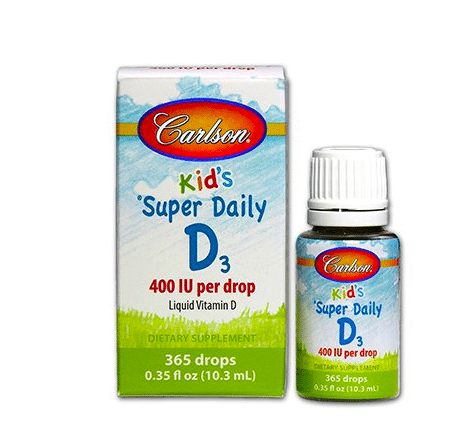Flu Fighting Hormone: It Won’t Require Any Down Time

We all hear it every year to get our annual flu vaccine, but sometimes the risk of a side effect might not be something we have time for. I have an alternative suggestion, keep reading to find out what could save you some sick days and side effects! Learn how vitamin d can help you fight off infection, even in children.
Table of Contents
Do flu vaccines cause any side effects?
Like any medical product, vaccines can cause side effects. Side effects of the flu vaccine are generally mild and go away on their own within a few days.
Common side effects from the flu shot include:
- Soreness, redness, and/or swelling from the shot
- Headache
- Fever
- Nausea
- Muscle aches
The flu shot, like other injections, can occasionally cause fainting.
Some studies have found a possible small association of injectable flu vaccine with Guillain-Barré syndrome (GBS). Overall, these studies estimated the risk for GBS after vaccination as fewer than 1 or 2 cases of GBS per one million people vaccinated. Other studies have not found any association. GBS also, rarely, occurs after flu illness. Even though GBS following flu illness is rare, GBS is more common following flu illness than following flu vaccination. GBS has not been associated with the nasal spray vaccine.
Are there signs or symptoms of a flu vaccine?
With any vaccine, look for any unusual conditions, such as high fever, behavior changes, or signs of a severe allergic reaction after vaccination.
Signs of a severe allergic reaction can include:
- Difficulty breathing
- Hoarseness or wheezing
- Swelling around the eyes or lips
- Hives
- Paleness
- Weakness
- A fast heartbeat or dizziness
All information above is stated by the cdc.gov
Vitamin D: Flu Fighting Power
The sunshine vitamin, vitamin D is also a hormone. It has antiviral properties and was shown to rapidly decrease flu symptoms.
“The studies clearly show that vitamin D is, undoubtedly, part of the complex factors which affect the immune response. So, assessing vitamin D status and maintaining optimal serum levels should be considered in all ageing adults and children, and micronutrients should be regarded as one of the essential factors which improve our health condition overall and also support our fight against diseases.” (Pubmed.gov)

Vitamin D Studies were even done on infants and the influenza virus.
“Of 121 cases in total, 78 and 43 cases of influenza A infection occurred in the low-dose and high-dose vitamin D groups, respectively. There was a significant difference between the groups (? = 14.6324, P = 0.0001). Among the cases of influenza infection, the median durations for fever, cough, and wheezing were shorter in the high-dose vitamin D group than in the low-dose vitamin D group.” (Pubmed.gov)
Infants were given 1,200 IUs of Vitamin D which is now measured as 30mcg of Vitamin D.
I’m in the sun a lot so I must have enough vitamin d…
The only way to truly know is if you do blood work that shows your vitamin D levels. Which even being outside you may not be absorbing it well enough. I have met multiple people who worked outside 40 hours a week and their vitamin D levels were very low. This is not always the case but getting a blood test done can let you know where you are starting at!
What should my Vitamin D levels be at for Optimal Health? (Not just mediocre)
The Vitamin D blood test is the 25-hydroxyvitamin D blood test and it is measured in ng/ml.
Optimal levels would be in the upper part of the range between 80-100 ng/ml.
You might want to read:
Why so much?
Vitamin D not only fights off the influenza viruses but is also necessary for hormone balance. If we want to have adequate hormones and keep our bodies functioning properly we need our nutrient levels to be in the ranges for Optimal Health!
How much vitamin D should I take?
A lot of people start on 5,000 IU’s (125mcg) and you could adjust your doses based on your energy levels, a sickness, or eventually your blood test. (Highly recommended)
However, if you want to at least start feeling better now, get yourself a bottle of vitamin d3 from a VERY reputable brand, not just the cheapest brand with no research.
Life Extension makes a very affordable vitamin D3.
Why I love Life Extension’s 5,000ius vitamin D3:
- It’s affordable
- It’s backed by TONS of science/ research
- They are teeny tiny softgels
I personally take 50,000 IU’s (1,250mcg)of Vitamin D3 when I feel a sickness coming on and for 10,000-20,000IU’s for maintenance. I don’t get a ton of our wonderful outdoor sunshine because our heat in Florida can be quite killer! However, I also like the energy consistently taking vitamin D3 gives me.
Mega Doses (after blood test)
Here is my 50,000 IU’s Vitamin D3 that I take when I am sick or take every other day. The reason I take such a high dose is to fight off that tickle in my throat or help make up for some of the lack of sunshine I did not get during the week.
This is a GREAT option for kids and even adults, however, it is 400Iu’s per drop, so infants would need 3 drops per day to fight the influenza virus. This supplement is safe from birth as labeled on the product and would be great to start as soon as possible!

Credits:
Gruber-Bzura, Beata M. “Vitamin D and Influenza-Prevention or Therapy?” International Journal of Molecular Sciences, MDPI, 16 Aug. 2018, www.ncbi.nlm.nih.gov/pmc/articles/PMC6121423/#!po=0.344828.
Zhou, Jian, et al. “Preventive Effects of Vitamin D on Seasonal Influenza A in Infants: A Multicenter, Randomized, Open, Controlled Clinical Trial.” The Pediatric Infectious Disease Journal, U.S. National Library of Medicine, Aug. 2018, www.ncbi.nlm.nih.gov/pubmed/29315160/?i=3&from=vitamin%2Bd%2Binfluenza&sort=%5Brelevance%5D.
Originally posted 2019-10-27 19:49:54.
Megan Santiago
Latest posts by Megan Santiago (see all)
- How to Find a Trauma Therapist in Tampa - September 30, 2024
- 12 Anxiety Quotes to Help You Feel At Ease - March 10, 2024
- Holistic Anxiety Relief Course - March 10, 2024



